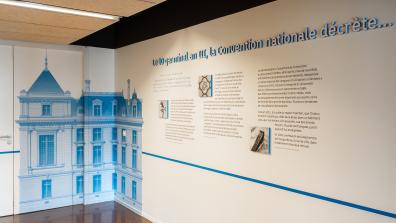Inalco gets a graphic and historical makeover
Menu Campus life
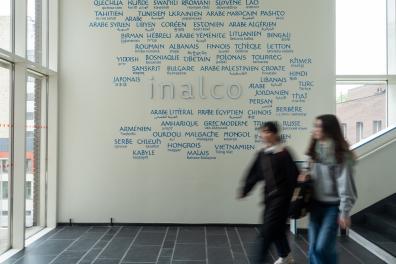
The red thread of this installation, a blue line that begins near the entrance to the Pôle des langues et civilisations guides visitors to Inalco and continues across the various installations.
This project was coordinated by Emmanuel Lozerand, "Histoire de l'Inalco" project manager, and Delphine Allès, vice-president of Inalco, with the assistance of Eve Dufrêne, communications director, Vincent Chagniot, technical director of the Pôle des langues et civilisations, and Valérie Liger-Belair, general services director.
Graphic design was handled by:
- Adeline Goyet, art direction, graphic design, project coordination and implementation
- François Chevret, art direction and graphic design
- Philippe Dabasse, calligraphy
The exterior window displays present the languages taught at Inalco, the career opportunities offered by our courses and the scientific disciplines we approach from the perspective of areal studies.
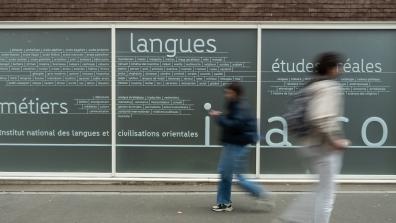
Observable from the 1st and 2nd floors, a large fresco depicts the languages currently taught at Inalco. These are written in their most common French names, in custom calligraphy. From one word to the next, each letter is unique, having been traced by hand; it's a living spelling, just like the language, which is in perpetual mutation.
Under each French name, we find the autonym, i.e. the way in which the languages refer to themselves, in a sober typography adapted to each language, and, where appropriate, showing variants and dialects.
The languages have been placed concentrically, the oldest taught the most in the center, the most recent towards the periphery.
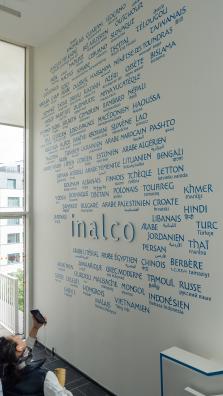
On the wall opposite the fresco, a timeline shows the six key dates in Inalco's history, from the creation of the Ecole spéciale des langues orientales in 1795, to the inauguration of the Maison de la recherche in 2021.
.
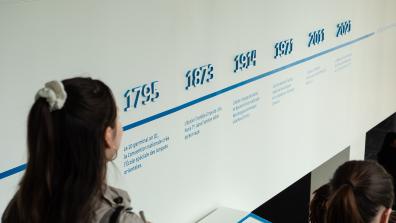
This rich history is summed up on the 4th floor with a decoration referring to the architecture of our two sites and their symbols: the weathervane and mosaics of the Maison de la recherche, the foundation nail of the Pôle des langues et civilisations.
